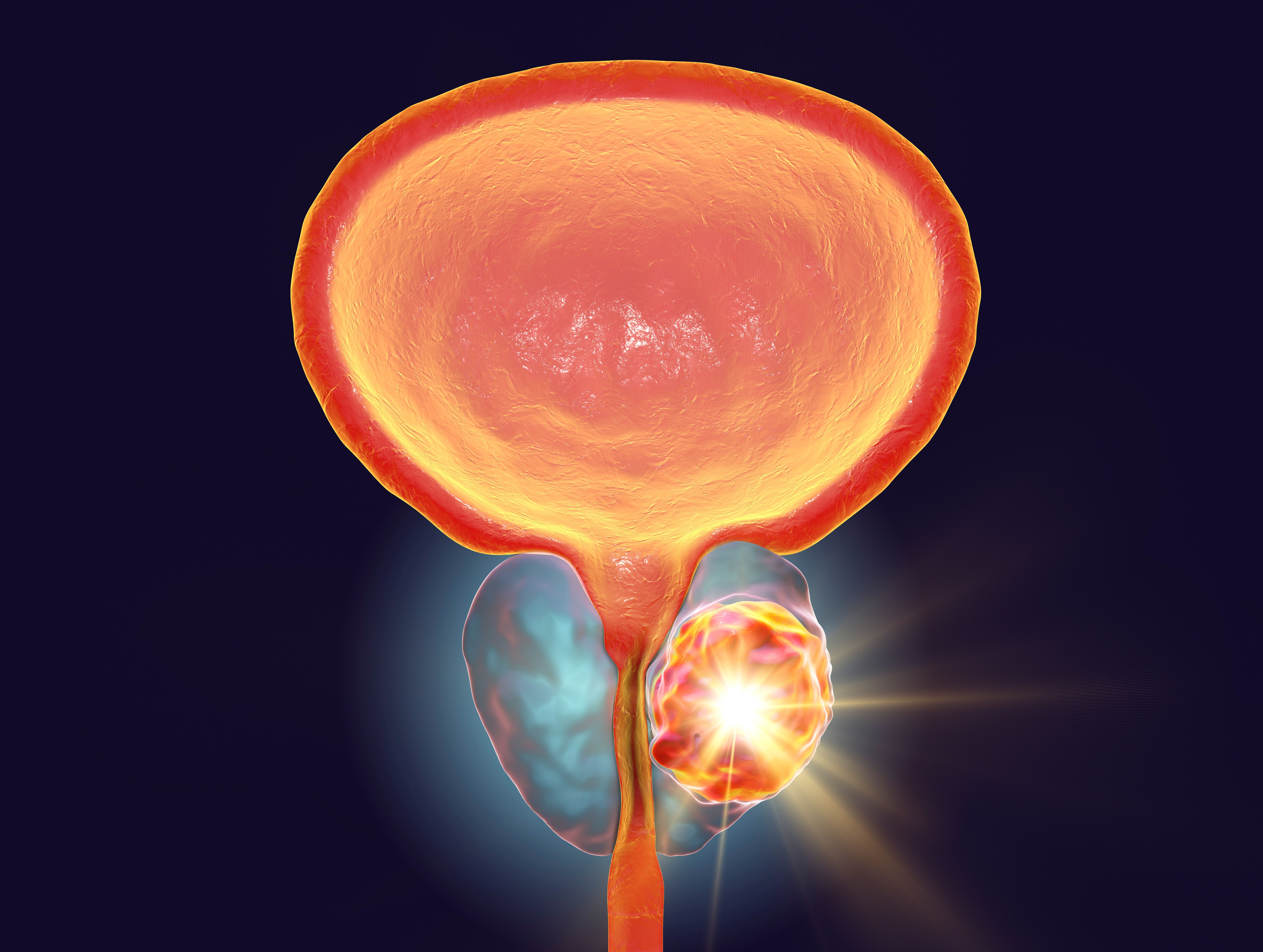Apalutamide Significantly Improves OS Vs Enzalutamide in Metastatic CSPC
Retrospective analysis data on apalutamide vs enzalutamide in patients with prostate cancer were consistent with findings from the phase 3 TITAN trial.
Retrospective analysis data on apalutamide vs enzalutamide in patients with prostate cancer were consistent with findings from the phase 3 TITAN trial.

Apalutamide (Erleada) produced a statistically significant and clinically meaningful 24-month overall survival (OS) benefit in patients with metastatic castration-sensitive prostate cancer (CSPC) vs enzalutamide (Xtandi), according to a news release from the drug’s developer, Johnson & Johnson.1
Survival data come from results of a retrospective analysis presented at the 6th European Conference of Oncology Pharmacy (ECOP).2 At 24 months, apalutamide elicited a 23% reduction in the risk of death compared with enzalutamide (HR, 0.77; 95% CI, 0.62-0.96; P = .019). Additionally, the results remained consistent using all follow-up when evaluating for OS (HR, 0.77; 95% CI, 0.64-0.93; P = .008).
Additionally, the proportion of patients alive at 24 months in the apalutamide arm of the retrospective study is consistent with findings from the phase 3 TITAN trial (NCT02489318).3 At the 24-month analysis of the TITAN trial, which evaluated apalutamide plus androgen-deprivation therapy (ADT) vs placebo plus ADT in patients with metastatic CSPC, the OS rate in the experimental arm was 82.4% compared with an OS rate of 87.6% for patients undergoing apalutamide to treat metastatic CSPC in the real-world analysis. A final analysis of the TITAN trial reported a 48-month OS rate of 65.1% for patients who initiated treatment with apalutamide.4
“This real-world evidence showed a statistically significant and clinically meaningful improvement in survival with apalutamide over enzalutamide in patients with [metastatic] CSPC at 24 months,” lead study author Neal Shore, MD, FACS, chair of the Steering Committee and medical director at the Carolina Urologic Research Center, said in the news release.1 “Head-to-head, randomized and controlled phase 3 studies have been the gold standard for comparing the effectiveness of oncology medicines; however, prospective androgen receptor pathway inhibitor [ARPI] comparator trials have not been conducted. This real-world study is provocative as the comprehensive data and rigorous methodology used in this study offers real-world insights on [OS], which can provide prescribers with information to consider when choosing an ARPI.”
The head-to-head retrospective study evaluated 3719 ARPI-naïve patients with metastatic CSPC. In total, 1810 patients initiated apalutamide, and 1909 initiated enzalutamide, with population characteristics similar in both cohorts following inverse-probability of treatment-weighing.
Mean patient age was 73 years, with approximately 60% and 23% of patients identifying as White and Black, respectively. Additionally, bone, nodal, and visceral metastases were observed in approximately 72%, 49%, and 20% of patients, respectively.
Furthermore, androgen deprivation therapy was used in approximately 81% of patients at the time of index. The index date was defined as first prescription date for either ARPI therapy.
The primary end point of the analysis was 24-month OS. The exploratory analysis involved OS evaluation using all follow-up.
Patients were excluded from the trial if they had castration-resistant prostate cancer, had prior use of an ARPI or advanced treatment, or had an additional primary cancer. Weighted Cox proportional hazard models were used to compare OS across treatment arms.
“[Apalutamide] is the only ARPI to demonstrate a survival benefit as early as 22 months, as seen in the TITAN study. Since [apalutamide’s] approval, multiple ARPIs have been introduced, but no one has directly compared their effectiveness on a large scale—until now,” Luca Dezzani, MD, United States vice president of Medical Affairs at Johnson & Johnson Innovative Medicine, said in the news release.1 “With a decade-plus legacy in prostate cancer, we have pushed the field further with this additional evidence showing an [OS] benefit with [apalutamide], which is a patient-centric option taken as just one pill, once daily.”
References
- Erleada (apalutamide) demonstrates statistically significant and clinically meaningful improvement in overall survival compared to enzalutamide in patients with metastatic castration-sensitive prostate cancer. News release. Johnson & Johnson. October 2, 2024. Accessed October 9, 2024. https://tinyurl.com/mwbkxajm
- Shore N, Lowentritt B, Khilfeh I, et al. Real-world head-to-head analysis of overall survival in patients with metastatic castration-sensitive prostate cancer initiated on apalutamide versus enzalutamide in the United States. Presented at: 6th European Congress of Oncology Pharmacy; October 2-4, 2024; Lisbon, Portugal. Abstract P31.
- Chi KN, Agarwal N, Bjartell A, et al. Apalutamide for metastatic, castration-sensitive prostate cancer. 2019;381(1):13-24. doi:10.1056/NEJMoa1903307
- Chi KN, Chowdhury S, Bjartell A, et al. Apalutamide in patients with metastatic castration-sensitive prostate cancer: final survival analysis of the randomized, double-blind, phase III TITAN study. 2021;39(20):2294-2303
Prolaris in Practice: Guiding ADT Benefits, Clinical Application, and Expert Insights From ACRO 2025
April 15th 2025Steven E. Finkelstein, MD, DABR, FACRO discuses how Prolaris distinguishes itself from other genomic biomarker platforms by providing uniquely actionable clinical information that quantifies the absolute benefit of androgen deprivation therapy when added to radiation therapy, offering clinicians a more precise tool for personalizing prostate cancer treatment strategies.